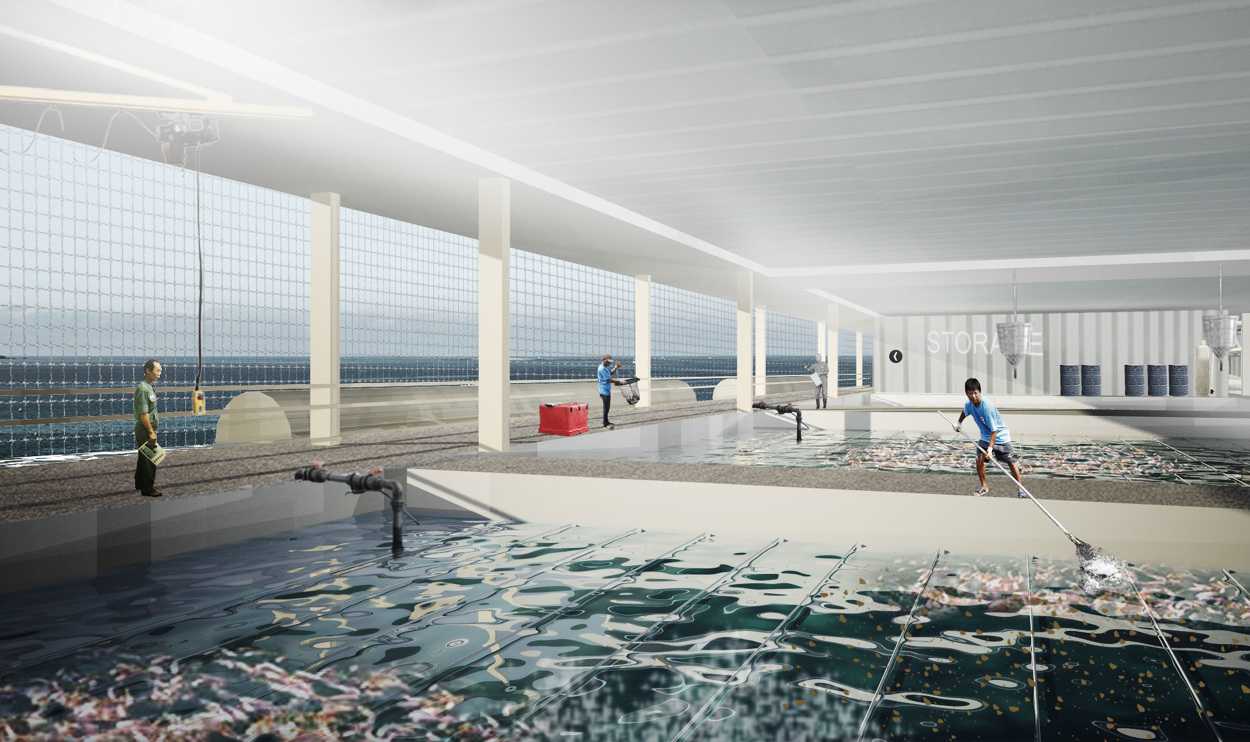Spanish architects designed floating farms that could produce about 10 tons of extra fruits, vegetables, and fish annually.
According to the United Nations, global food production must double by 2050 to meet demands of our ever-growing population. As the world population is predicted to reach 9.1 billion by 2050, the food industry must keep up with the increasing number of mouths to feed. A team of Spanish architects, determined to combat the global hunger issue, designed a two-million-square-foot floating farm that could produce about 10 tons of food annually.
The design firm, Forward Thinking Architecture, focuses on creating a sustainably designed food source for densely populated areas with access to seas, lakes, or rivers. The massive solar-powered farm would operate with a hydroponic agricultural system, meaning that the crops would be grown using mineral nutrient solutions in water instead of soil.
SEE ALSO: Why One Man Wants to Grow Basil under the Sea
According to the Smithsonian, these rectangular farms would have a default size of 656 by 1,150 feet; to put that in perspective, the three-story farm would even tower the Chrysler building in New York City (it’s 1,049 feet tall). But since these farms will be built over the vast blues that cover more than 70 percent of Earth’s surface, these floating farms certainly wouldn’t cause any space issues.
 |
According to the architects’ plans, the top level of the farm would be covered in solar panels and skylights, harvesting sunlight for electricity as well as filtering the light through to the structure’s second level, which would host the hydroponic vegetables and crops. Then the waste products from the crops would feed the fish in the bottom level, and the waste from the fish would be used to fertilize the crops. Essentially, the design creates its own self-sustaining mini-ecosystem.
While the farm is still in the conceptual stage, it’s difficult to determine how successful the plans will be when put into practice following the development of the first prototype. However, the blueprint is based on existing technology, so the chances of success are promising.
“This is not science fiction. It is a serious and viable solution,” the Forward Thinking Architecture team wrote on their site. It is not meant to ‘solve’ all of humanity’s hunger problems or to replace existing traditional agriculture; this is not the idea at all. The driver behind the project is to open a new initiative which can be complementary and compatible with other existing production methods in order to help reduce food risk associated problems in different areas of the globe.”
The team predicts that the farm would be able to produce 1.7 tons of fish and 8.1 tons of fruits and vegetables annually. To make the farm-to-table process even quicker, there would be an on-board slaughterhouse as well as a processing and packaging area so that the products could be sent straight to shops or consumers, reducing food miles and carbon footprints.
While the self-sustaining system seems flawlessly designed, the turbulent nature of the oceans might have other plans. The seas often lash out with violent storms, so finding safe spots for the farms would be essential.
However, these floating farms could revolutionize the field of food production in the future. The world desperately needs innovative strategies to combat hunger, and the Forward Thinking Architecture team has raised the bar.
For more information check out the video below:








Facebook comments